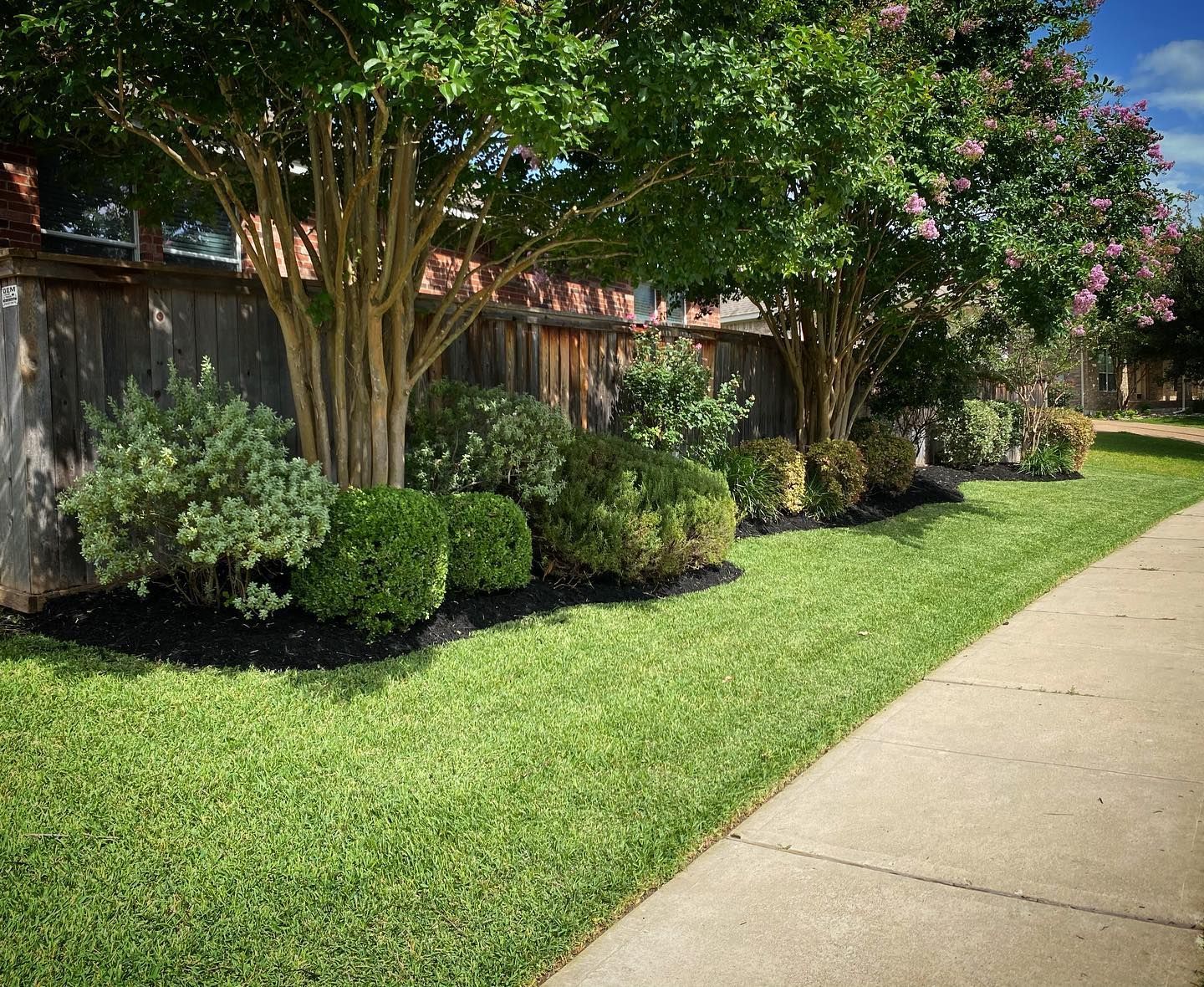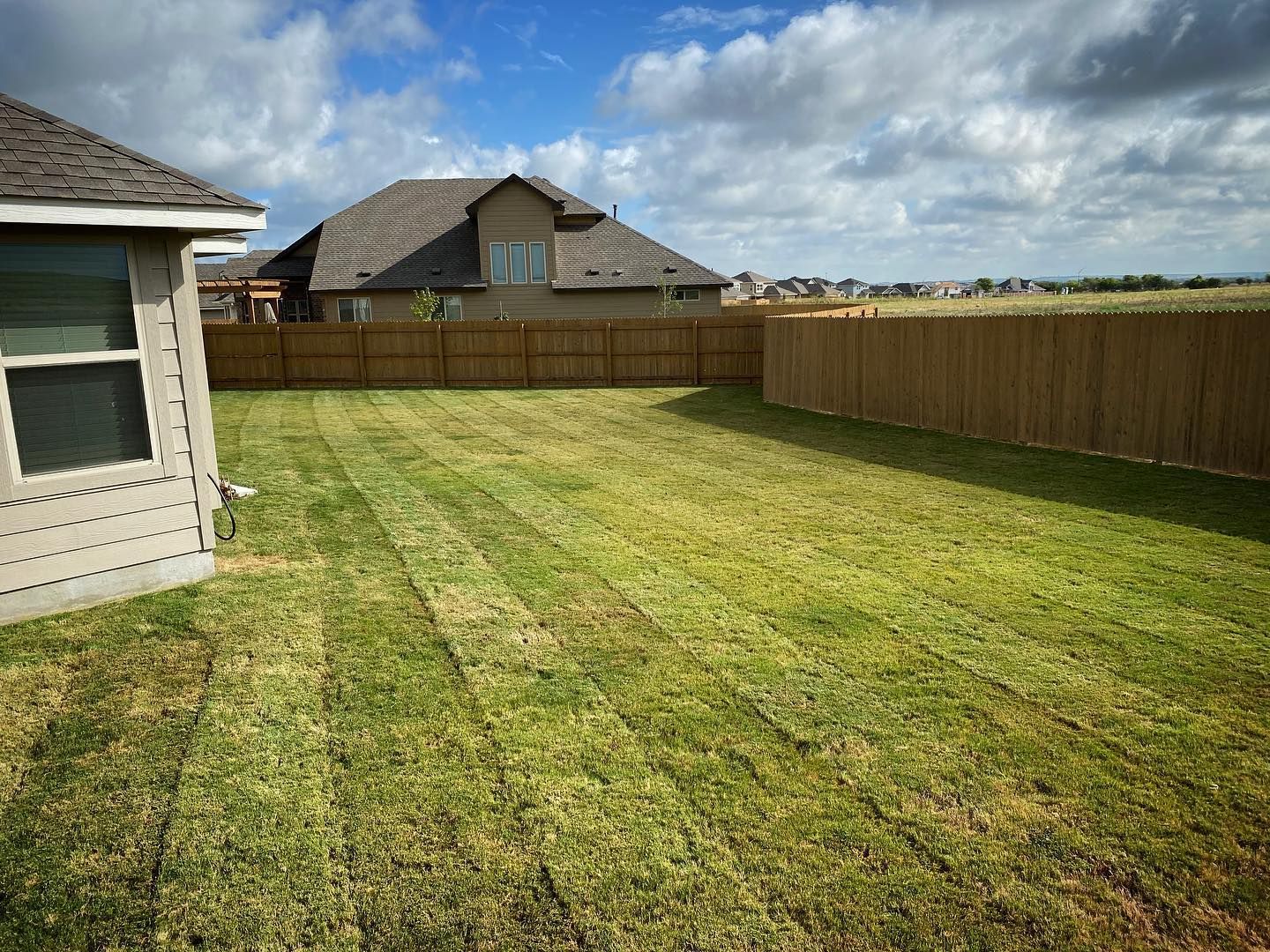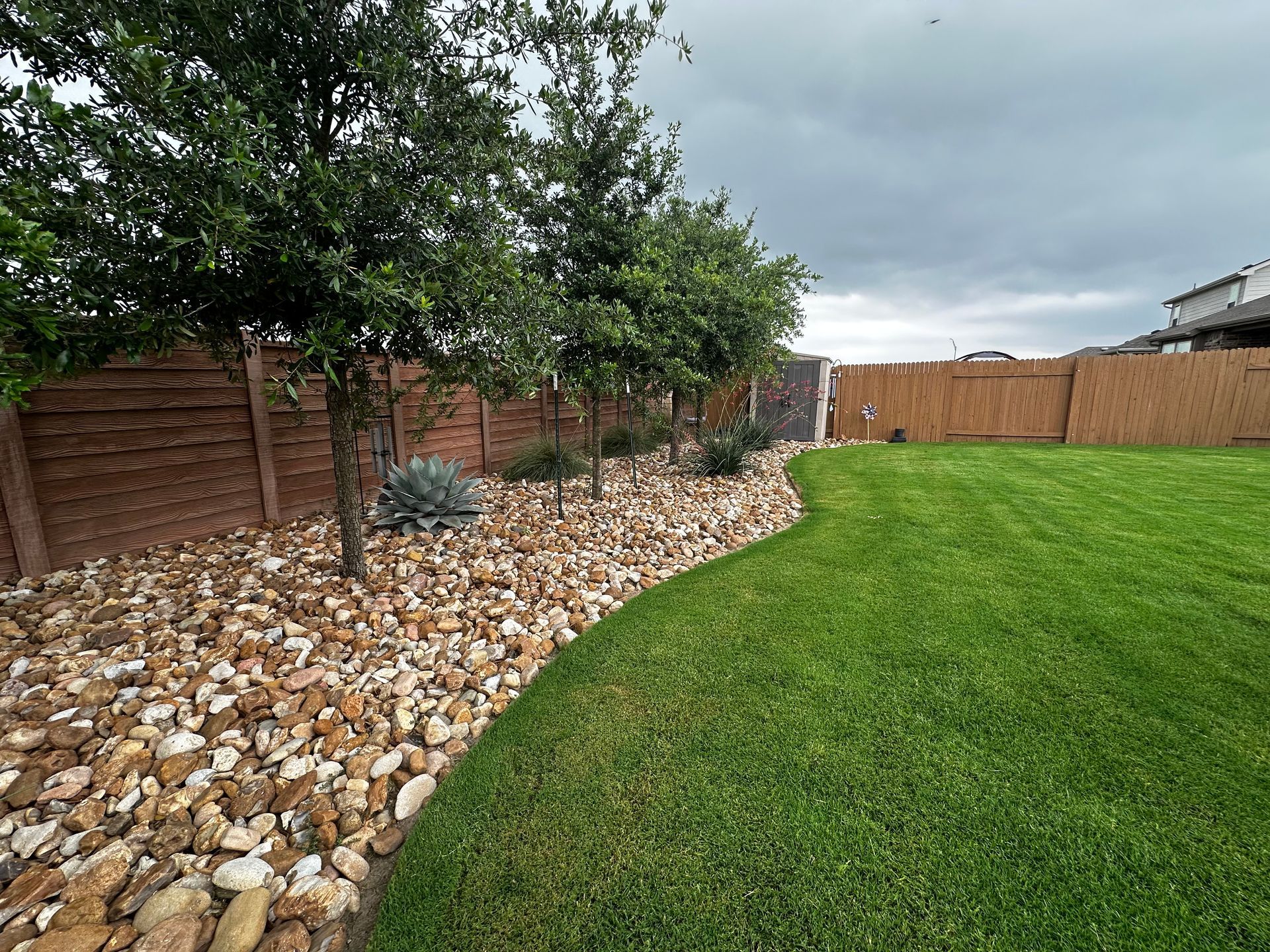When & Why to Schedule Core Aeration for Your Lawn
Every homeowner wants a lush, green, resilient lawn — but soil compaction, limited nutrient uptake, and heavy traffic often undermine that goal. That’s where core aeration comes into play. Done correctly and at the right time, it breathes life back into your turf, helping roots grow deeper and healthier.
Below, we’ll walk through what core aeration is, the signs your yard needs it, when to schedule it in Georgetown and Central Texas, how it complements services like top dressing, and tips to maximize its benefits.
What Is Core Aeration, and How Does It Work?
Core aeration (also called plug aeration) is a mechanical process that removes small plugs of soil from your lawn, leaving holes that let air, water, and nutrients penetrate deeper into the root zone. It reduces compaction, promotes root growth, and improves overall turf health.
Here’s how it typically works:
- A specialized machine with hollow tine attachments moves across your lawn.
- The tines extract cylindrical cores (plugs) of soil and thatch from the turf.
- These cores are left on the surface to break down naturally or be worked back into the soil.
- You’re left with holes that act like micro-portals for oxygen, water, and beneficial microbes to reach deep into the soil.
Because the process disturbs the soil, it's best performed when the grass is actively growing, allowing it to recover more quickly.
Why is core aeration preferred?
- Better for relieving soil compaction than spike or solid‑tine aeration, because it actually removes cores.
- Helps reduce thatch buildup by encouraging decomposition.
- Creates improved pathways for water, nutrients, and oxygen to reach deeper roots, making the lawn more resilient to stress (heat, drought, heavy use).
Signs Your Lawn Needs Core Aeration
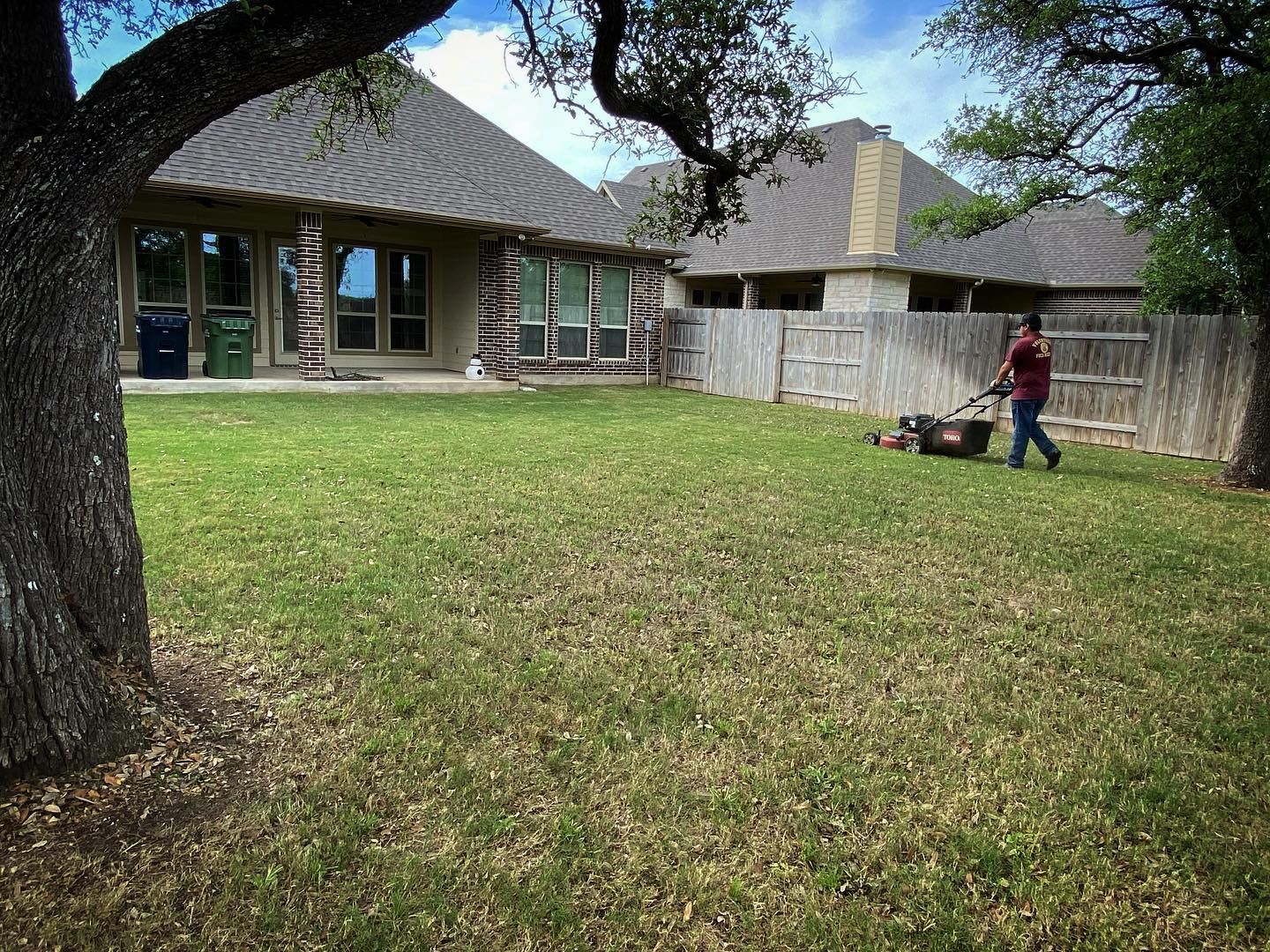
You don’t always have to wait until things look bad. Here are indicators that your lawn is ready for aeration
- Soil feels hard or resists a screwdriver test. If you can’t push a screwdriver into the ground with ease, soil compaction is likely.
- Pooling or standing water after light rain. This suggests poor drainage or an inability for water to infiltrate.
- Thin, patchy grass or bare spots. Sparse areas may be caused by inadequate root development.
- Reduced results from fertilizing. If your lawn isn’t responding to regular fertilization, the nutrients may not be reaching the roots.
- High foot traffic or densely populated areas. Play areas, pet paths, or frequently mowed paths tend to compact the soil more quickly.
If you see any combination of the above, aeration is likely overdue.
When to Aerate in Georgetown & Central Texas
Timing is key. For lawns in Central Texas, typically warm-season grasses, the ideal window is late spring through early summer. By that time, your grass is actively growing, so it recovers faster from the disturbance.
Some additional timing considerations:
- Do not aerate in extreme heat or drought. That stresses the turf and slows recovery.
- Aim for moist soil, not soggy. Soil that’s lightly moist but not saturated allows for better penetration and reduces the risk of tearing the turf.
- For clay-heavy soils, you may aerate twice a season. Because clay soils tend to compact quickly, doing spring and mid-summer aeration can be beneficial.
- Combine with top dressing for max impact. Applying compost or sand after aeration helps fill the holes and boosts the effect.
In summary, for Georgetown and its surrounding areas, scheduling aeration sometime between April and July yields the best results.
How Aeration Fits into a Smart Lawn Care Program
Aeration is not a standalone service — it works best when integrated with others:
- Top Dressing: After aeration, spreading fine organic compost or a sand-compost blend helps the material fall into the holes, improving soil structure and nutrient content.
- Overseeding/Reseeding: The holes created by aeration provide ideal conditions for seed-to-soil contact, thereby improving germination.
- Fertilization & Soil Amendments: Apply fertilizer or soil amendments immediately after aeration to maximize their penetration into the roots.
- Proper Watering Strategy: After aeration, your watering plan should shift slightly—water more deeply but less frequently to encourage root growth into deeper soil layers.
- Ongoing Maintenance: Aeration should be one component of a broader plan that includes mowing, trimming, pest control, and regular checks.
Pros & Considerations of Core Aeration
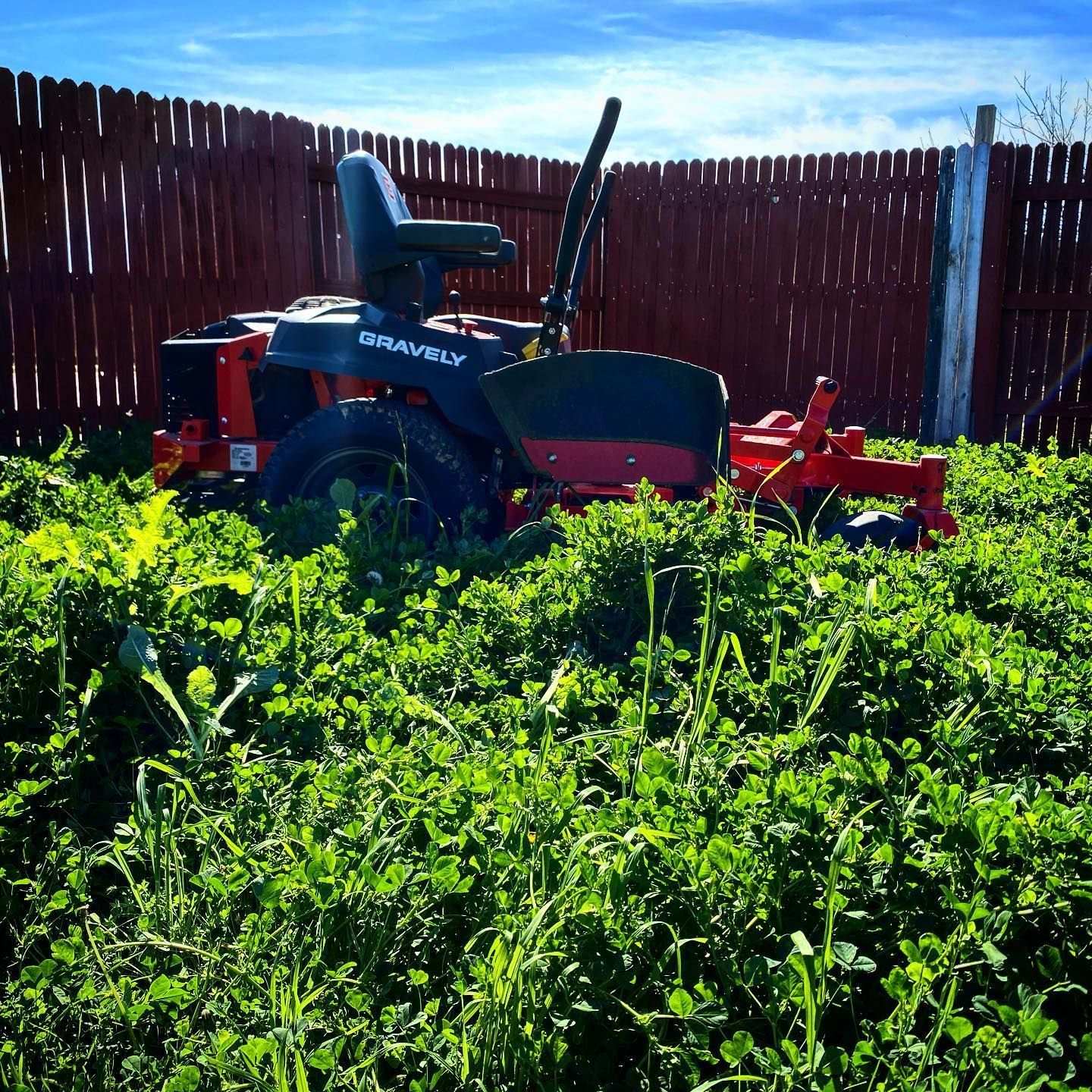
The many benefits:
- Relieves compaction
- Promotes stronger, deeper roots
- Improves drainage
- Helps soil nutrient uptake
- Reduces thatch
- Boosts lawn resilience
Some tradeoffs/cautions:
- Leaves soil cores on the surface (which will break down over 7–14 days)
- Temporary disruption to appearance
- Must be timed well (not too hot, too dry)
- Not as effective if the lawn is already stressed or dormant
The pros far outweigh the temporary cons — especially when handled by experienced crews using right-timed application.
How Often Should You Aerate?
- Once per year is sufficient for many lawns with moderate traffic and loamy soils
- Bias toward twice a year if your soil is heavy clay or your property sees heavy use
- Less frequent (every 2–3 years) in sandy or looser soils
- Spot aeration can be done in high-traffic zones every year, while full-lawn aeration follows broader timing
Hiring the Right Local Team
Because aeration requires specialized equipment, precise timing, and expertise, many homeowners opt to hire professionals. Here’s what to look for:
- Use of modern, commercial-grade core aerators (not push or spike-only equipment)
- Understanding of local soils and climate
- Ability to pair aeration with top dressing, overseeding, and proper watering
- Transparent pricing and clear communication
- Local crews who understand Georgetown / Round Rock area conditions
We bring all that to your lawn — so you don’t have to worry about equipment, timing, or technique.
Call to Action
If you're in Georgetown, Round Rock, or the surrounding area and wondering whether your lawn is due for aeration, let us take a look. We’ll assess your soil, plan the right timing, and deliver core aeration (often paired with top dressing) that helps your turf thrive.
[Request a Free Aeration Quote] | [Learn More About Our Services]


